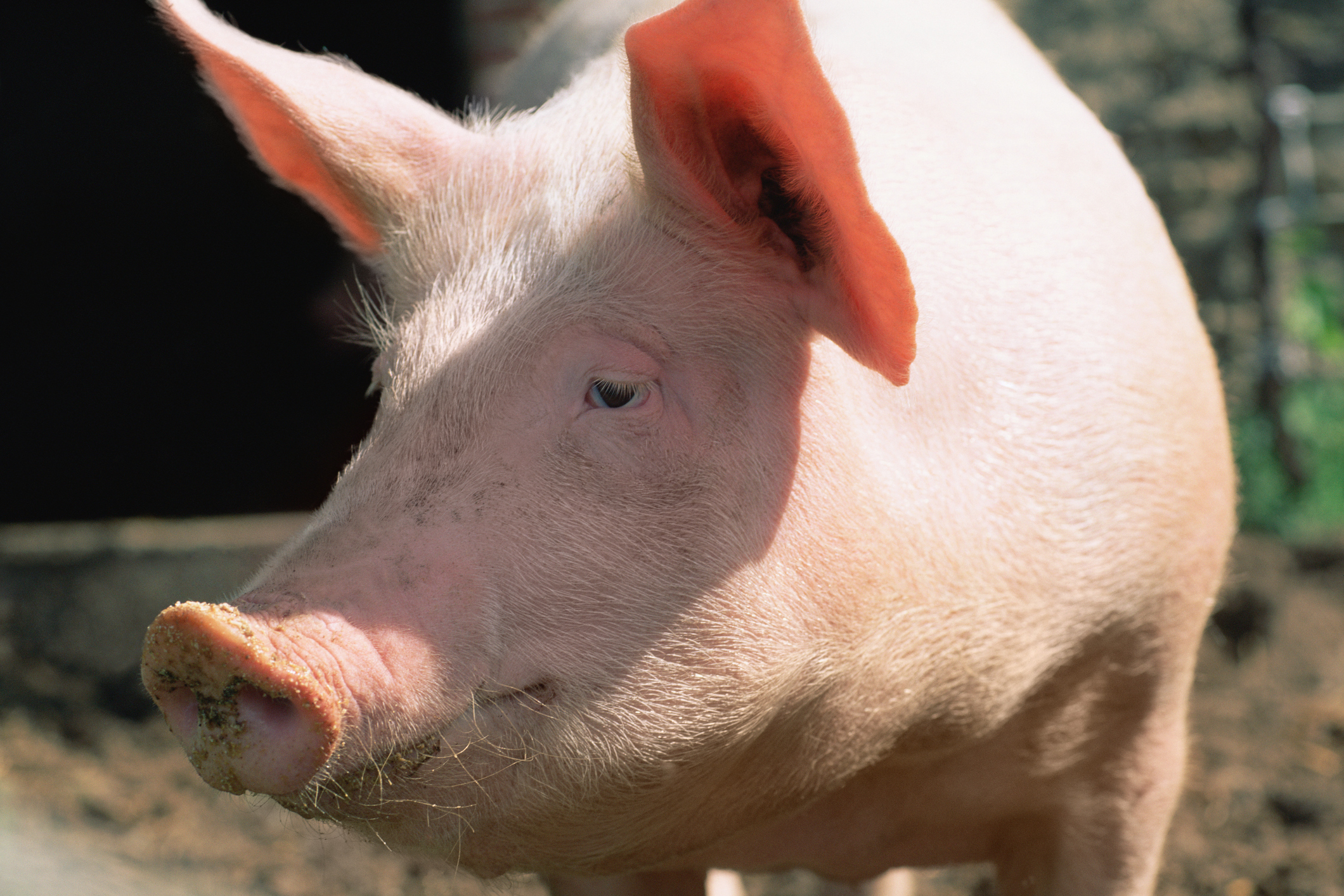
Organ transplants save lives, but healthy specimens from the right donors are in short supply, which is why scientists are searching for more reliable ways to replace diseased organs that depend less on chance and more on some of the latest scientific advances.
Enter pigs, who are bringing hope to the 10,000 people in the U.S. currently waiting for liver transplants. On Jan. 18, researchers at the University of Pennsylvania and the biotech companies eGenesis and OrganOx announced a major step toward one potential way to address the problem. They hooked up a brain-dead patient to a pig's liver, which circulated the man's blood for three days.
“It was amazing to me to see the system working,” says Dr. Abraham Shaked, professor of surgery at the University of Pennsylvania, who oversaw the experiment. “The brain-dead patient was exceptionally stable, and we were very surprised to see that over three days, the pig liver was functioning outside the body and looked pretty good.”
The scientists said the experiment on the patient proved that a genetically modified pig liver could serve as a temporary substitute for a human liver. In this first case, the brain-dead patient’s liver continued to function, but the researchers are planning to test the system in brain-dead patients after removing their livers.
The hope is that pig livers may one day serve as a temporary bridge to sustain patients on the transplant waiting list, as well as patients with compromised livers from alcohol-related conditions that need time to recover on their own. Eventually, the livers might also be transplanted into people.
How it works
The breakthrough is a mashup of several scientific innovations. The pig donor was a clone created using the same process that produced Dolly the sheep, the first cloned mammal. The clones were created using pig cells gene-edited by CRISPR technology. And the resulting pig liver was hooked up to a perfusion machine that pumped blood between a brain-dead patient and the pig liver.
Shaked says early tests showed that the pig liver was acting much like a human liver—getting blood from the patient and producing bile—for three days, the length of the study. Mike Curtis, CEO of eGenesis, which created the genetically modified pigs, says the patient also showed additive effects in other measures of liver function such as bilirubin and lactate levels, which suggests that the pig liver was contributing to what the patient’s liver was producing.
Overcoming rejection
The animal-to-human liver transplant—or xenotransplantation—has been a holy grail for scientists since the 1960s. But many such studies have failed due to rejection. Organs between species are naturally incompatible; trying to swap a pig liver in for a human one, for example, leads to microscopic blood clots in the smallest blood vessels that destroy red blood cells and cut off the blood supply to the transplanted liver.
Changing some of the genes in the pig liver to make it less pig-like and more human is one way to address the problems, but the first such modified livers could include only a limited number of genetic changes with the techniques available at the time. In a 2017 study, for example, scientists transplanted pig livers with a single genetic modification to reduce incompatibility into baboons, and the livers were eventually rejected. One baboon, however, survived for a month, suggesting that the technique could hold promise for reducing the chances of rejection and extending the viability of these transplants.
Since that study, the gene-editing technology CRISPR has emerged as a powerful way to introduce multiple genetic changes relatively easily. In this study, eGenesis scientists used CRISPR to make not one, but 69 edits to the pig genome: three to remove the most pig-like proteins that would activate the human system to reject the liver, seven edits to add human genes to the pig liver, and 59 to inactivate pig retroviruses that could cause problems in humans. “Until CRISPR, there was no way to do that many edits easily,” says Curtis.
The future of pig livers
This single-patient study is just the beginning of what xenotransplants can achieve, says Shaked. The liver has two major duties in the body: regulating critical enzymes and substances such as glucose and cholesterol, and filtering out toxins from the blood. This experiment focused on the latter, but in years to come, more sophisticated pig livers could eventually perform some of the more complex functions of the organ in human patients.
The studies needed to get there are already underway. Shaked is optimistic that by the end of the year, after further testing, the first patients with liver failure could be trying the system. Hopefully, being hooked up to a pig liver will let their livers recover on their own, or hold them over while they wait for a transplant. “Based on what I saw," he says, "I am encouraged."
More Must-Reads From TIME
- The 100 Most Influential People of 2024
- Coco Gauff Is Playing for Herself Now
- Scenes From Pro-Palestinian Encampments Across U.S. Universities
- 6 Compliments That Land Every Time
- If You're Dating Right Now , You're Brave: Column
- The AI That Could Heal a Divided Internet
- Fallout Is a Brilliant Model for the Future of Video Game Adaptations
- Want Weekly Recs on What to Watch, Read, and More? Sign Up for Worth Your Time
Contact us at letters@time.com